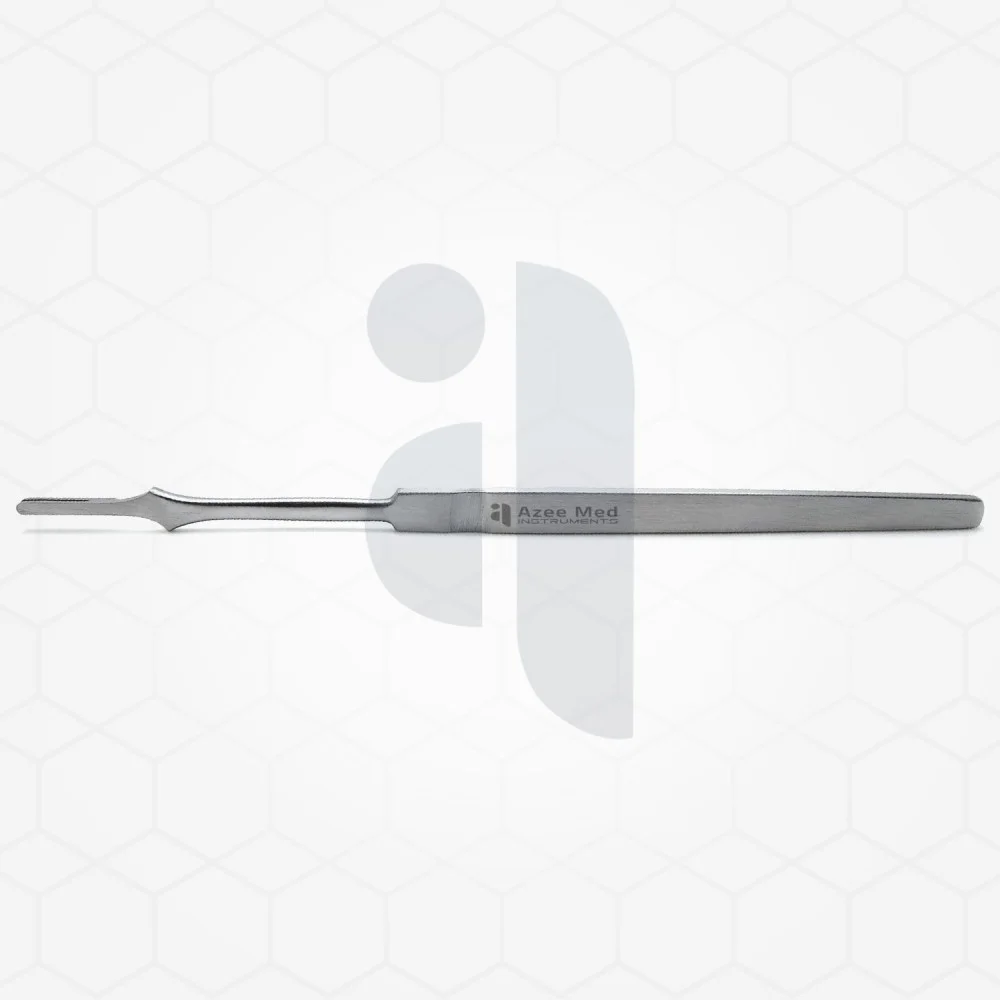The No. 7 knife handle is a staple in surgical settings, designed to provide precision, control, and comfort for medical professionals. This slender, elongated handle is a favorite among surgeons performing delicate procedures that require fine motor skills and accuracy. Its compatibility with various 7 knife handle makes it a versatile tool in a wide range of surgical disciplines, including general surgery, plastic surgery, and cardiovascular procedures.
Design and Ergonomics of the No. 7 Handle
The No. 7 knife handle is uniquely crafted to resemble the shape of a writing instrument, offering a comfortable and secure grip. Its slender profile allows surgeons to maneuver the blade with exceptional precision, making it ideal for intricate incisions. The handle’s lightweight design reduces hand fatigue during prolonged procedures, ensuring steady and controlled movements.
Constructed from high-quality stainless steel, the No. 7 handle is durable, corrosion-resistant, and easy to sterilize. Its compatibility with a variety of interchangeable blades, such as No. 10, 11, 12, and 15, allows surgeons to adapt the tool for different surgical applications. This adaptability makes it a preferred choice for procedures that require both fine detail and deeper cuts.
Surgical Applications of the No. 7 Handle
The No. 7 knife handle is widely used in procedures that demand extreme precision. In cardiovascular surgery, where delicate incisions are required around vital structures, the handle’s design enables meticulous control. Surgeons rely on its ergonomic shape to make precise cuts without damaging surrounding tissues. Similarly, in plastic and reconstructive surgery, the No. 7 handle aids in sculpting and reshaping soft tissues, contributing to optimal aesthetic outcomes.
In general surgery, this handle is frequently used for incisions in areas that require a high degree of accuracy, such as laparoscopic entry points and delicate tissue dissection. The ability to pair it with different blade sizes further enhances its utility, allowing surgeons to make both superficial and deep cuts with ease. Additionally, in neurosurgery and ophthalmic procedures, where even the slightest deviation can have significant consequences, the No. 7 handle ensures stability and control.
The Importance of Precision in Surgery
Surgical success often depends on the precision of incisions, and the No. 7 knife handle plays a crucial role in achieving this. The fine control it provides allows for clean, well-defined cuts, reducing tissue trauma and promoting faster healing. In procedures where accuracy is paramount, such as tumor resections and vascular surgeries, this handle enhances the surgeon’s ability to navigate complex anatomical structures.
Minimizing hand fatigue is another essential factor in surgery, especially during lengthy operations. The lightweight and ergonomic design of the No. 7 handle helps maintain surgeon comfort, reducing the likelihood of hand tremors that could compromise precision. By ensuring stability and ease of movement, this instrument supports high-quality surgical performance.
Conclusion
The No. 7 knife handle is an indispensable tool in modern surgery, offering unmatched precision, adaptability, and ergonomic comfort. Its compatibility with various blades makes it a versatile choice for a wide range of surgical procedures, from cardiovascular and plastic surgery to neurosurgery and general operations. With its well-balanced design and superior control, the No. 7 handle remains a trusted instrument for surgeons striving for excellence in every incision.





Comments